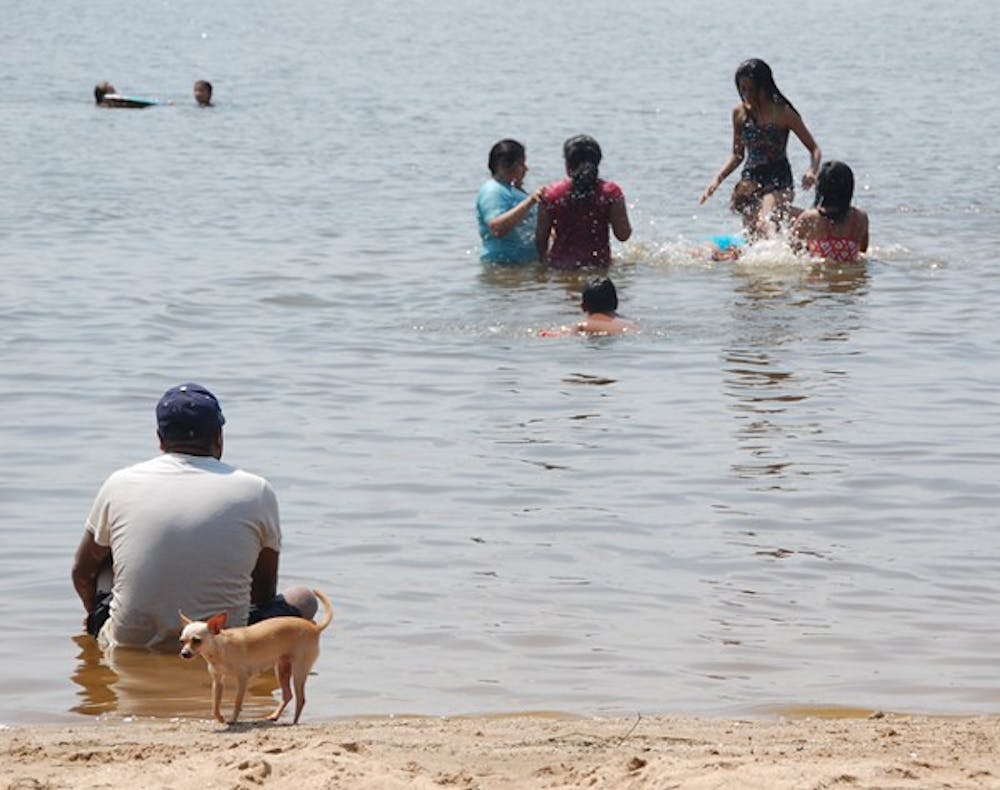The plan is nearly complete to stem the extended degradation of the lake that provides about 600,000 people in the Triangle with drinking water and draws in 750,000 annual visitors.
Falls Lake has been suffering pollution from a variety of sources including farms, poorly maintained septic tanks, water treatment plants and air emissions.
“It’s death by a thousand cuts,” said JoAnn Burkholder, director of the Center for Applied Ecology at N.C. State University.
“This lake is in big trouble, and it’s because we aren’t taking care of it.”
There will be two hearings for Triangle citizens to voice their thoughts on the N.C. Division of Water Quality plan for restoring the lake at the end of the month.
The plan has two stages. The first, short-term stage stipulates that major polluters improve internal water treatment by 2021. The second stage sets municipal water treatment standards to be met by 2036.
The Division of Water Quality declared Falls Lake to be “impaired” because of an overabundance of nutrients in the water.
The main culprit is land development around the lake’s watershed, which includes portions of Durham and Orange counties.
Polluted stormwater runoff from developed areas is the number one threat to water quality in North Carolina, said Burkholder. The water flows over impermeable surfaces, collecting sediment and chemicals before emptying into the reservoir.
“Think of anything that comes off of a parking lot,” said Bill Holman, director of state policy at the Duke University Nicholas Institute for Environmental Policy Solutions. “It’s not good for people or critters.”
An excess of nutrients in the water encourages the growth of algae near the surface. Algal decomposition drains oxygen from the water and can disrupt the lake’s ecology.
If untreated, it can lead to “fish kills” and disease in humans.
The contentious decision regarding who should pay for what portion of the clean-up cost is also up for discussion at the hearings.
“That’s the million-dollar question. That issue’s still up in the air,” said Danny Bowden, Raleigh’s stormwater program manager.
According to the State Office of Budget Management, the cleanup could be a $1.54 billion question.
Raleigh receives most of its drinking water from an intake facility downstream from the main sources of pollution in Durham and Orange counties. Raleigh’s water is still safe to drink.
“But I will say this: there has never been a situation in this state where folks pay for treatment for improvements upstream,” Bowden said.
Durham’s Deputy Director of Water Management Vicki Westbrook said Durham has petitioned for the data models to be re-run for accuracy before Durham is saddled with more than $320 million in facility upgrades.
However, the Clean Water Act stipulates that the polluter provides the cleanup.
“You cause the problem, you’re responsible,” said Holman.
“But it’s reasonable to talk about how the city of Raleigh can help its upstream neighbor.”
The hearing in Durham will be held at 7 p.m. June 30 at Neal Middle School. Raleigh will host a meeting at 7 p.m. July 1 at the Campbell Lodge in the Durant Nature Park.
Contact the State & National Editor at stntdesk@unc.edu.
Falls Lake pollution plan up for public discussion

Visitors cool off Tuesday afternoon on the shores of Falls Lake. DTH/Jamie Emmerman


